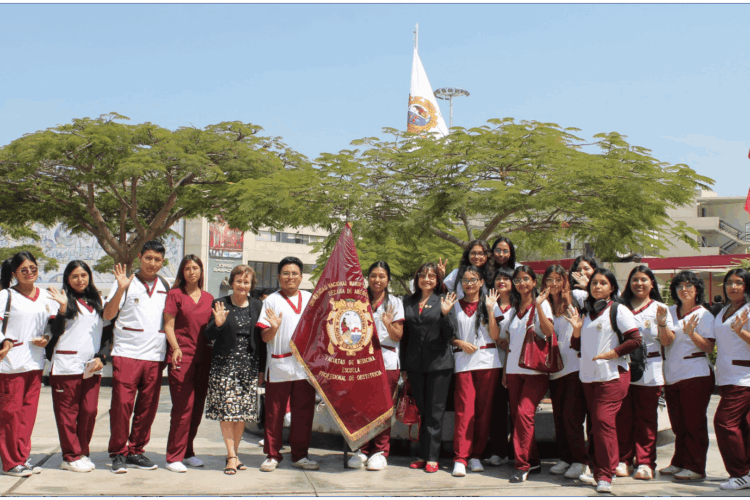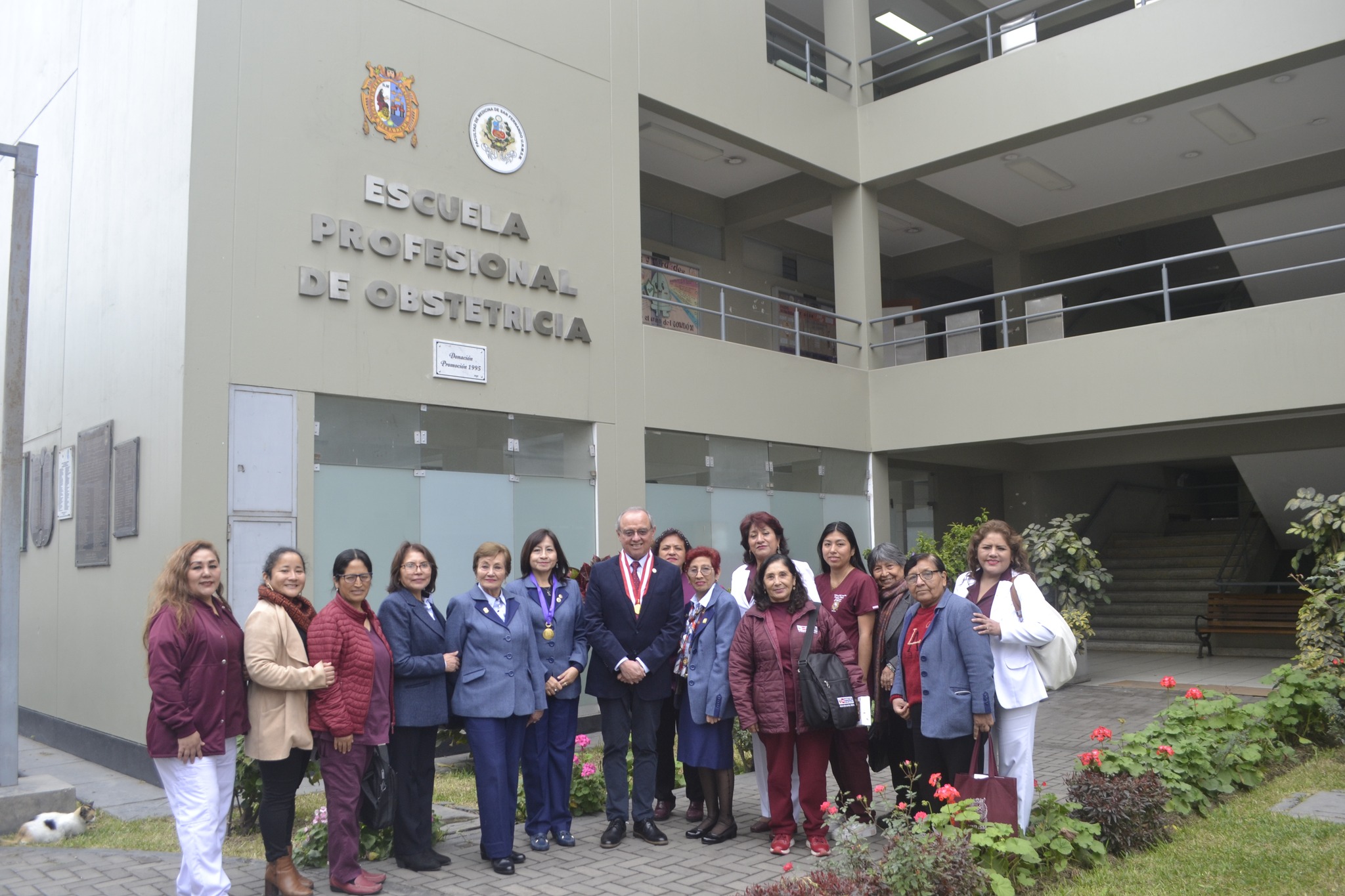Two Hundred Years on from the Creation of the First Midwifery Training Centre in the Americas

* In Peru, professional midwives are referred to as obstetricians or gynaecologists. Obstetrics refers to the profession of midwifery.
This article, produced by the ICM’s Regional Professional Committee of the Americas, revisits the history of Midwifery in Peru, which has deep roots dating back to the pre-Columbian period. Even at that time there were women who assisted in childbirth, medicinal plants were used to provide pain relief and traditional beliefs were held about maternity and birth. With the advent of the colony, these practices continued, often unregulated, at great risk to mothers and newborns. It was only after Peru achieved its independence that the State began to institutionalise maternal health.
Creation of the Escuela Profesional de Obstetricia de la Universidad Nacional Mayor de San Marcos [Professional Midwifery School of the National University of San Marcos] (UNMSM)
On 10 October, 1826, the president of the Republic of Peru, Marshal Andrés de Santa Cruz, founded the first Maternity House (now the Instituto Materno Perinatal [National Maternal Perinatal Institute]) and the first Birthing School (now the Professional Midwifery School of the UNMSM) by means of the Supreme Decree No. 110.
The UNMSM, the oldest school in America, also known as the Decana de América [University of Lima] celebrates its 474th anniversary this year.
The creation of both institutions 199 years ago was a watershed in the history of midwifery in Peru and in the Americas, as it heralded the creation of a hospital with its own school to train midwives to attend to childbearing women and their newborns.
Madame Fessel, the first director
The first director of both institutions was the French midwife Benita Cadeau de Fessel, who graduated with honours (“Gold Medal”), the highest accolade awarded at the Maternity Port Royal in Paris.
Madame Fessel was a highly sensitive person who wanted to help women at that most sublime moment in their lives, i.e. childbirth, and was convinced that the best contribution she could make would be to train midwives just as qualified, scientific and distinguished as she was, as she herself recounts in one of her books; this concern prompted her to leave Europe and travel to Peru, where she spent 10 years, laying the foundations of a scientific and highly humanistic profession and an educational model that took its inspiration from European birthing centres and schools.
Over the years, the Birthing School evolved until it became the first Professional Midwifery School of the School of Medicine of the UNMSM.
University midwife training
 On 9 September, 1856, during the Provisional Government of Ramón Castilla, the Midwifery department became an official part of the School of Medicine of the National University of San Marcos, tasked with teaching “care and postnatal care for childbearing mothers and their newborns”. This date was ratified by means of the Rectoral Resolution No. 01035-R-2019 of 27 February, 2019. And this is how Dr. Cayetano Heredia embarked upon his spell as the Dean of the School of Medicine, straddling three Professional Schools: Medicine, Obstetrics (Midwifery) and Pharmacy. Midwife training was academically institutionalised and university midwife training became official.
On 9 September, 1856, during the Provisional Government of Ramón Castilla, the Midwifery department became an official part of the School of Medicine of the National University of San Marcos, tasked with teaching “care and postnatal care for childbearing mothers and their newborns”. This date was ratified by means of the Rectoral Resolution No. 01035-R-2019 of 27 February, 2019. And this is how Dr. Cayetano Heredia embarked upon his spell as the Dean of the School of Medicine, straddling three Professional Schools: Medicine, Obstetrics (Midwifery) and Pharmacy. Midwife training was academically institutionalised and university midwife training became official.
The profile of midwifery graduates currently focuses on:
- General competencies: Leadership, teamwork, verbal and written communication, and research based on critical and creative thought. Problem-solving, learning management and ethical reasoning.
- Specific competencies: Basic Sciences, services management, public health and social and civic responsibility.
- Speciality competencies: Provide comprehensive care to women in preconception, conception (pregnancy, childbirth and immediate care to newborns during childbirth) and the postnatal period; to provide lifelong care in sexual and reproductive health to women, their companions, family and community, underpinned by a human rights, gender and intercultural approach, actively participating with the healthcare team in diagnosis and management and acting as a relevant point of reference for obstetric complications, governed by the standards of quality, respect for life and human dignity.
Academic training in midwifery has evolved constantly: a competencies-driven syllabus that was updated in 2024, more demanding in terms of clinical practice at the different healthcare, research, social responsibility and sexual and reproductive healthcare levels, placing the emphasis on reducing maternal and infant mortality; community practices based on intercultural reality and a health-rights and gender-based approach.
There are now 34 universities in Peru that offer training to midwives to work in clinical and community practice, public health, research and teaching in the public and private sectors.
On 15 July, 1975, the Decree Law No. 21210 created the Peruvian College of Midwives, with its own legal personality, to represent in-country midwives; membership of the College is an indispensable requirement to practice the profession.
The career of midwifery in the Americans
Every country has its own time-line, although they all share common characteristics with Peru, such as the influence of European models in midwife training and the organisation of maternity hospitals; the enactment of laws to regulate professional profile and functions to be able to practice as a midwife, not only in care in childbirth, newborns and their related complications, but also for the comprehensive care provided to the sexual and reproductive health of women, adolescents and their families.
Midwifery was institutionalised in several Latin American countries during the 19th century or in the early decades of the 20th, as was also the case in Peru. For example, midwifery schools were set up in Chile, Argentina, Ecuador, Uruguay, Paraguay and Brazil, among other countries.
Commitments moving forward
As our profession’s two-hundredth anniversary approaches, our Professional Midwifery School strives to uphold the following commitments: to ensure that all women, including the indigenous populations, Andean and Amazon communities, enjoy access to qualified midwives, based on an intercultural approach; to foster lifelong education and research; to embrace human rights, equality and intercultural approaches at all levels of care; to make proper use of technology, such as telemedicine and artificial intelligence; to further intersectoral and interprofessional connections; to advocate in the formulation of public policies to promote women’s health and participate in their implementation and oversight; and finally, and more particularly, to defend childbearing women, mothers and newborns.
Some final thoughts
One hundred and ninety-nine years have gone by and we continue to keep the flame lit on that 10th of October in 1826 alive. The Professional Midwifery School of San Marcos is not only an institution that is approaching its bicentennial, it is also a training centre, a benchmark by virtue of its academic quality, proof of which is to be found in its graduates, since the School has trained leaders in the different fields of midwifery; it is also an ethical point of reference and an agent of change.
We midwives look back on the past to acknowledge the road travelled, the sacrifices, the success stories, and all the women and families that have put their trust in us. We look upon the present with commitment: to be better, more humane, more inclusive and more competent with every passing day. And we look towards the future with hope: because the mission that Madame Fessel undertook almost two centuries ago lives on in each and every birth, in every life that we take care of, in every woman who feels she has a voice and accompanied, in every woman who feels that she is being defended.
Bibliographic references
- Rabí Chara, Miguel. Historia de la Medicina Peruana. Tomo V: El Hospital de Maternidad de Lima y la Escuela de Obstetrices del Perú (1826-1836). 1ª ed. Lima: Grahuer Editores; 2004.
- Ministerio de Salud – IDREH. Formación y Regulación de los Recursos Humanos en Salud. 1ª ed. Lima: Serie de Recursos Humanos en Salud Nº 4; 2005.
- Hidalgo Infantas, Violeta. Obstetricia en dos siglos. 1ª ed. Lima; 2004.
- Colegio Regional de Obstetras Lima y Callao. (s. f.). Reseña histórica. Retrieved from https://www.crolimacallao.org.pe/rhistorica.php